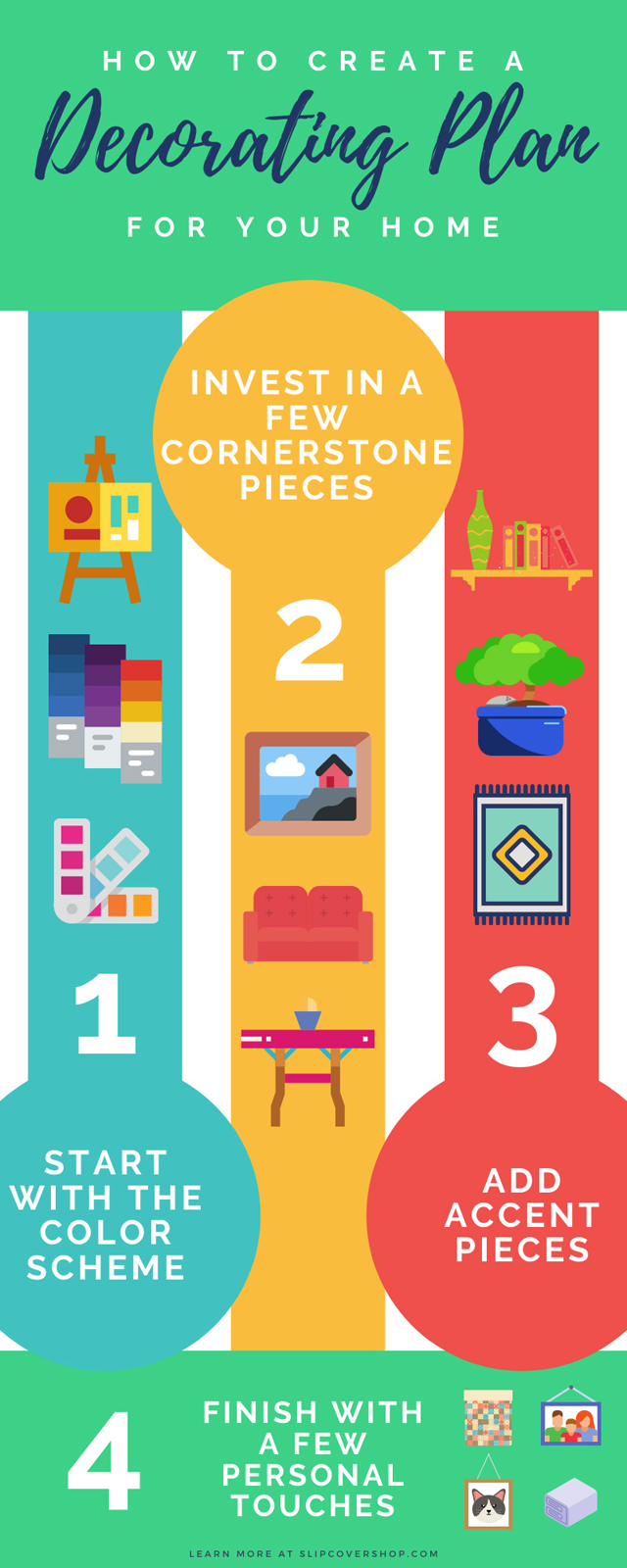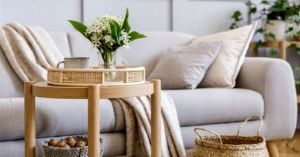A home is a reflection of the self. It tells all who visit about the owner. A living room is set up to show the life the family living in the home leads. The kitchen tells a tale of relationships, gatherings, and lifestyle. Every room tells another piece of the story. Piece by piece, the home is put together and connected as an entire picture. Discover how to create a decorating plan for your home.
Start with the Color Scheme
The start of your interior decorating plan should start with colors. It’s essential to choose the colors of your home prior to investing in décor. Here is a step-by-step guide to finding your room’s or home’s full color scheme.
- Start with your base color. Go for something neutral that pairs well with other colors.
Example: Light gray
- Choose a darker or lighter shade of that base color. This layer will give the room depth.
Example: Dark gray
- Decide on your main pop of color. This can be any bold color you like.
Example: Maroon
- Pick a complimentary color to the main pop of color as an accent color.
Example: Ballerina pink With these four steps, you should have a well-developed color scheme. Listing the example colors from most prominent to least, your color scheme should look something like this: Light grey: Dark gray: Maroon: Ballerina pink With this color scheme in mind, be sure to note that the first color on the list should be in your walls and on major furniture pieces. The second color should be highlights, such as throw blankets, large décor, and wall hangings. The third color on the list should be the majority of the pops of color such as throw pillows, rugs, and accent furniture. The last color on the list is perfect for tiny additions such as vases, artwork, picture frames, or other small trinkets.
Invest in a Few Cornerstone Pieces
Every room in a home needs a few cornerstone or conversation pieces. These are the items that draw the most attention when a person enters a room. This could be a piece of artwork, a furniture item, a wall hanging, or even a room feature. A cornerstone piece is the piece to base the rest of the room’s interior design off of. Below are a few tips for displaying your cornerstone pieces.
For Furniture Pieces
For furniture pieces as a cornerstone item, it’s vital to match all other furnishings in the room with this piece. They should all play off of one or more elements of the main piece. Doing this allows a person’s focus to be briefly whisked away to other items and then quickly and expertly drawn back into the main item. Centering your furniture around the cornerstone item helps to create a full, cohesive design throughout the room.
For Art or Wall Hangings
Art or wall hangings are popular choices for conversation or cornerstone pieces. These items should be sizeable enough to be noticed right away in a room. When choosing art or another form of wall hanging as your cornerstone piece, be mindful to not overcrowd the walls in the room with other items. These can distract and draw attention away from the main piece.
For Room Design Features
To rely on a room design feature as a cornerstone piece, your room must already have interesting architecture. This could be expertly vaulted ceilings, exposed beams, natural brick, or countless other eclectic features. These design items are free to stand alone, and furnishings should complement the design in the room.
Decide How To Arrange Your Furniture
There are so many possibilities for furniture arrangements when you’re working with an empty room. The most important thing when setting up a room’s furnishings is to think about what the room’s functionality is. For the living room, will it be used for television and entertainment, or catching up with friends and family? This determines whether the room should be set up for conversation and easy flow, or with plenty of seating arrangements and space for lounging. If a kitchen is an eat-in kitchen, do you plan on hosting meals there, or would that space be better allocated to extra storage? When arranging a room, it’s critical to consider its function.
Add Accent Pieces
Accent pieces can make or break a room. These items add intrigue and fascination to a room. They allow for accent colors, new textures, and dimensions to enter and live within a room. Below are a few examples of commonly used accent pieces:
- Throw pillows
- Throw blankets
- Wall hangings
- Pictures and colorful picture frames
- Candles
- Trinkets and figurines
- Plants and plant pots
- Vases
- Coasters
- Table centerpieces
- Placemats and table runners
- Rugs
- Side tables and other small furnishings such as ottomans
Pro Tip: You don’t have to ditch your old ottoman if you change up your living room’s style—you can simply invest in quality ottoman slipcovers so that your furniture always keeps up with your home’s look.
Finish with a Few Personal Touches
The small, personal pieces of a room are often the most impactful. Personal touches are anything that has value to you. This can mean family portraits, a quilt your grandmother gave you, a pet bed for you beloved fluffy friend, a trinket tray filled with potpourri that smells like home, and so much more. There are so many different ways you can decorate and design your home. Interior design is an intricate and personal process. Don’t be afraid to include elements that are important to you such as family photos, trinkets from vacations past, and functional items you can’t live without. Design doesn’t always mean every item has to be for style and style alone—each item can represent a unique part of what makes you feel at home. How you create a decorating plan for your home is completely up to you. Explore our collection of custom slipcovers and find out how personalized you can make them. Each item in your home reflects something about you and your family, and the customization and personalization that comes with each of our slipcovers is immeasurable. Contact us today for more information or to start creating the perfect slipcover. 

